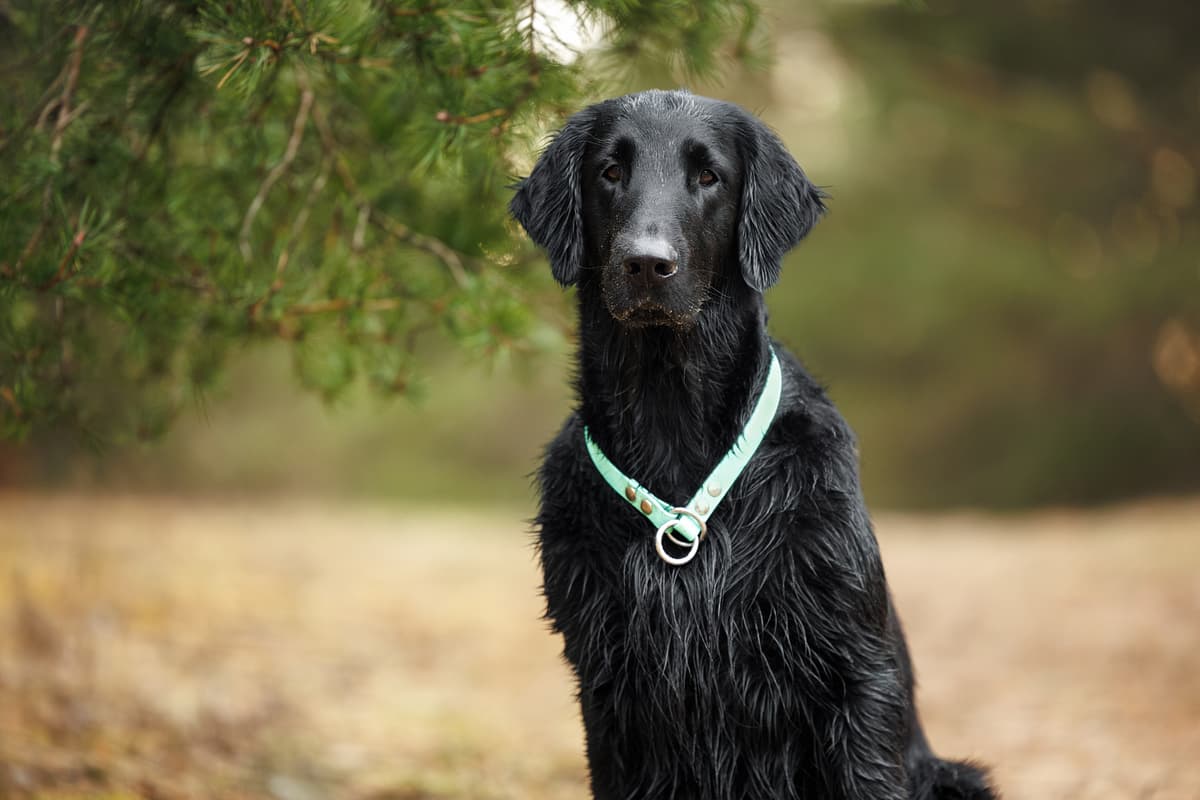Flat-coated Retriever vs Labrador Retriever
Discover the differences between Flat-coated Retriever and Labrador Retriever to make the best choice for your situation.
Try different breeds

Flat-coated Retriever
A joyful, energetic, and affectionate breed that thrives on companionship and adventure. Loved for their glossy black coats and playful, optimistic spirit.

Labrador Retriever
Eager, friendly, and intelligent, this breed loves being part of an active family. Their gentle nature and loyalty make them outstanding companions for all ages.
Quick comparison
Large
27–32 kg
Straight, dense
8–10 years
25–29 kg
High energy
Large
29–36 kg
Short double coat, water-resistant
10–12 years
25–32 kg
High energy
Personality & behavior
Compare the personality traits and behavioral characteristics of both breeds.
Flat-coated Retriever
Very sociable and enjoys human companionship
Quick to learn and responds well to training
High stamina, needs regular physical activity
Loves games, always eager to play
Adjusts well to new situations and changes
Labrador Retriever
Warm and sociable with people and animals
Quick learner, responds well to training
High stamina, enjoys active pursuits daily
Loves games and interactive activities
Adjusts easily to new situations and environments
Care needs
Exercise, grooming, and daily care requirements
Flat-coated Retriever
Hip dysplasia, cancer
Labrador Retriever
Hip dysplasia, elbow dysplasia
Suitability
How well each breed fits different living situations and families
Flat-coated Retriever
Good option
Eager to please and sociable, but needs consistent training and exercise
Not ideal
Needs more space and activity than most apartments allow
Perfect fit
High energy and stamina match active lifestyles with regular outdoor activities
Highly suitable
Friendly, gentle, and tolerant with children when supervised
Very friendly
Gets along well with other pets due to sociable nature
Prone to anxiety
Dislikes being left alone and may develop destructive behaviors
Labrador Retriever
Great choice
Patient and eager to please, Labradors are manageable for most first-time owners.
Not ideal
Labradors need space and exercise, so apartments can limit their activity needs.
Perfect fit
High energy and stamina make them excellent for active individuals or families.
Highly suitable
Gentle temperament and playful nature make them safe and loving with young children.
Very friendly
Generally sociable and get along well with other dogs and pets.
Prone to anxiety
Extended alone time can lead to boredom and destructive behaviors in this breed.
Breed strengths
What each breed excels at and their best qualities
Flat-coated Retriever
- Friendly with people and other dogs
- Highly trainable and eager to please
- Excellent retrieving and swimming ability
- Consistent playful and happy temperament
- Generally healthy with good lifespan
Labrador Retriever
- Friendly and sociable with people and dogs
- Highly trainable and eager to please
- Excellent with children and families
- Strong retrieving and swimming abilities
- Generally adaptable to various living situations
Challenges & considerations
Potential challenges and considerations for each breed
Flat-coated Retriever
- Prone to separation anxiety if left alone
- Needs significant daily exercise and activity
- High grooming needs due to feathered coat
- Can be overly exuberant or boisterous
- Susceptible to cancer compared to other breeds
Labrador Retriever
- Prone to obesity without portion control
- Can become destructive if under-exercised
- Heavy seasonal shedding requires regular grooming
- May develop hip or elbow dysplasia
- Needs significant daily physical activity
Ready to choose your perfect breed?
Learn more about each breed or compare other breeds to find the perfect match for your lifestyle.
Discover more helpful tools
Make use of our other free tools to get the most out of your pet experience
